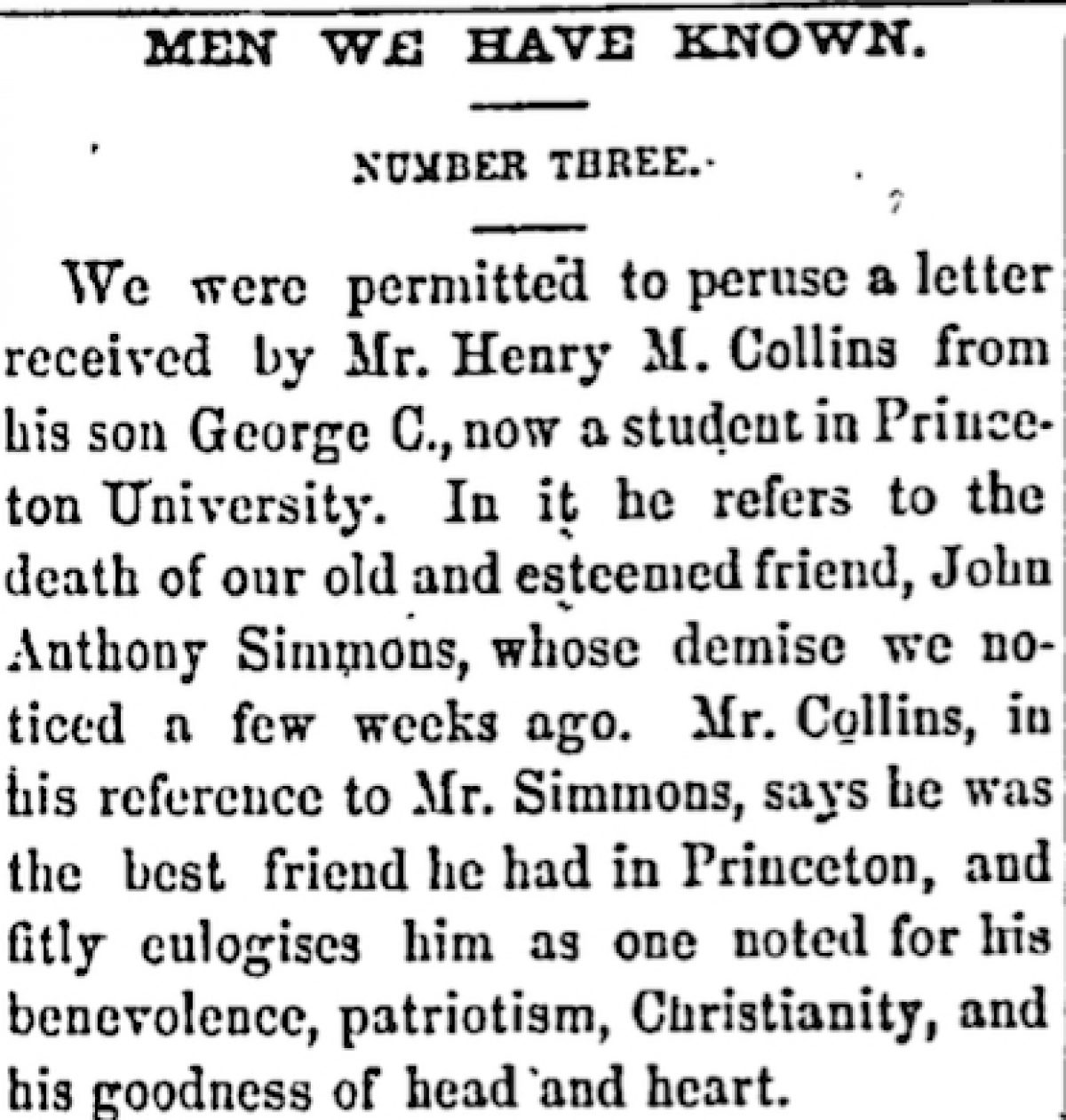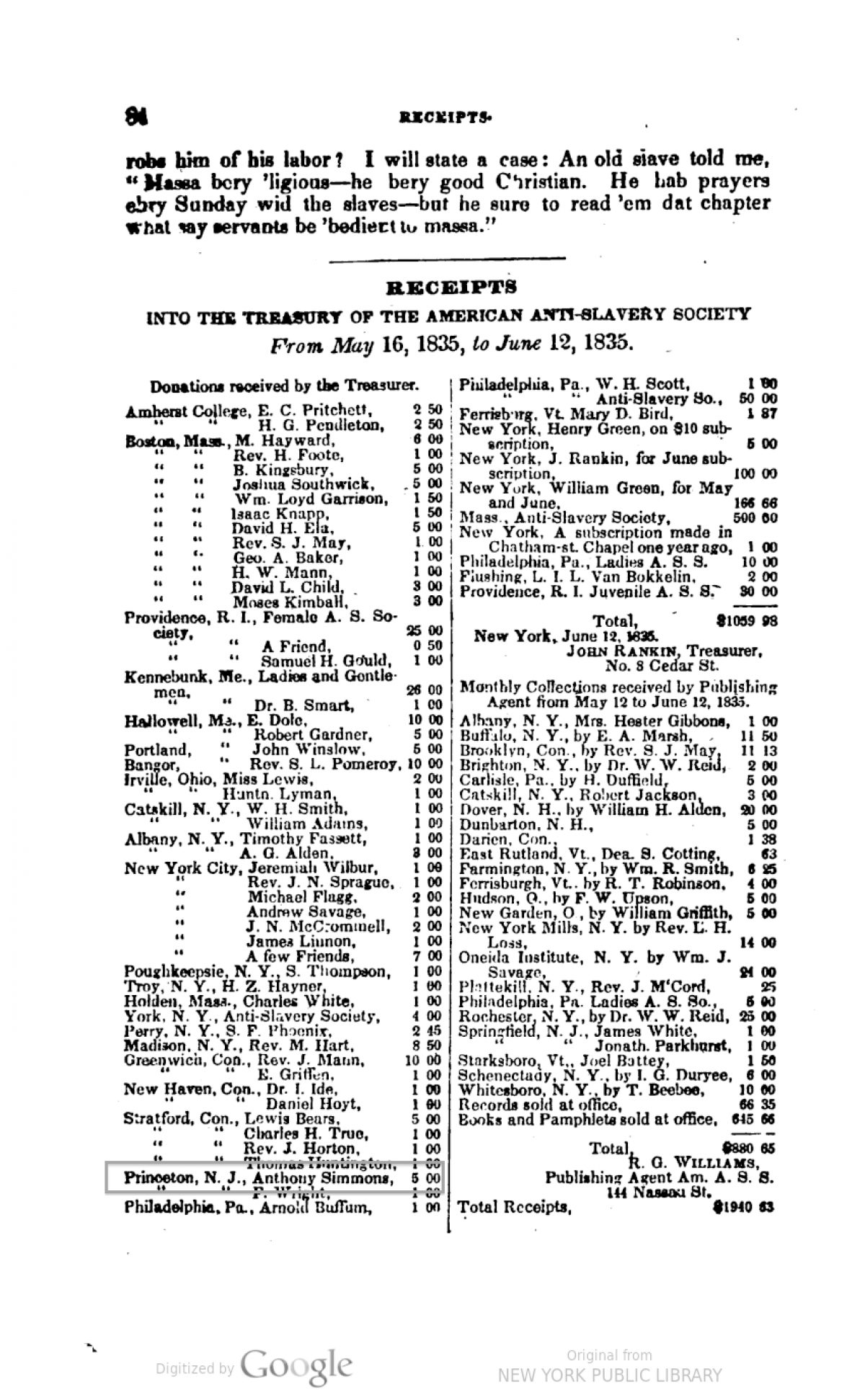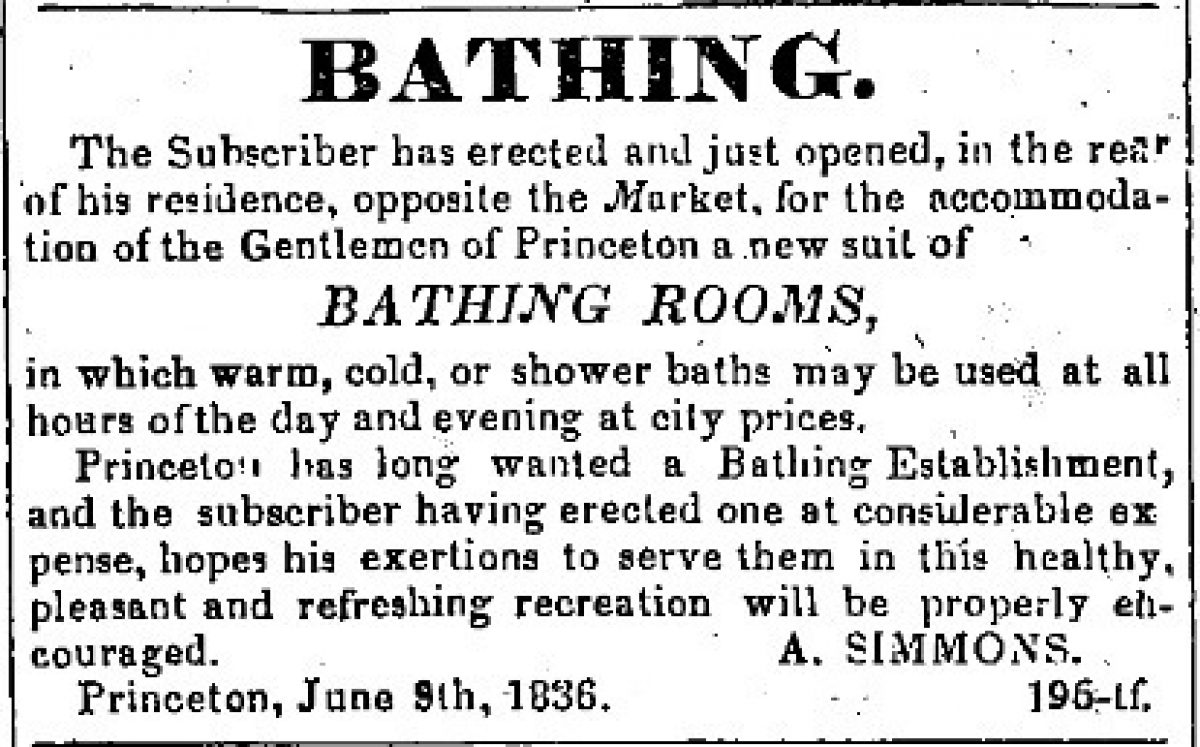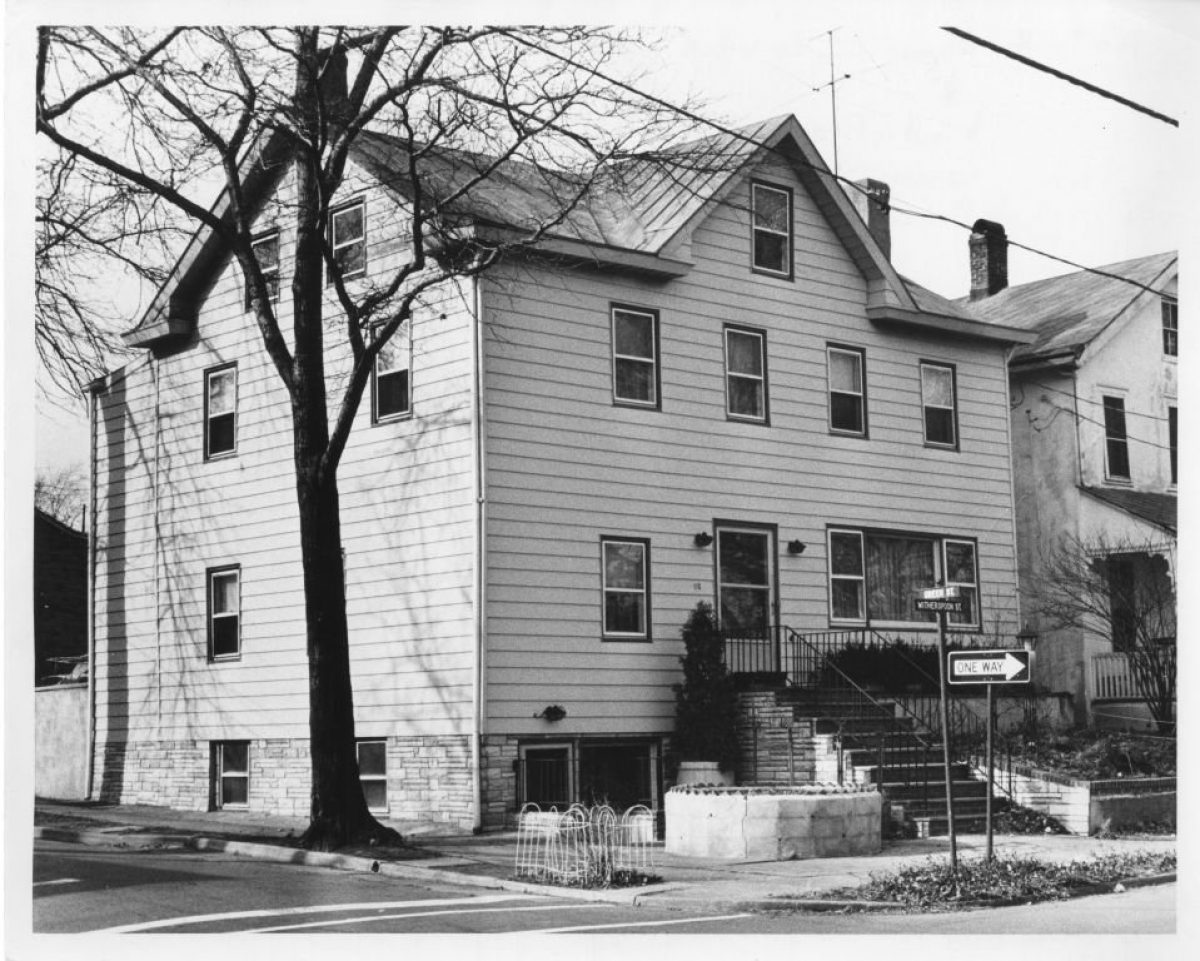[1]
1850 and 1860 Federal Censuses, accessed 14 February 2017, www.ancestry.com. Censuses list Simmons as "Anthony Simmons," but his obituary uses the full name "John Anthony Simmons."
⤴
[2]
1850 United States Federal Census, Princeton, Princeton, Mercer, New Jersey, accessed 14 February 2017, www.ancestry.com; "Survey and District Evaluation, Witherspoon-Jackson Community," accessed 15 February 2017, www.princetonnj.gov; “Died,” Princeton Standard, 14 February 1868.
⤴
[3]
“Men We Have Known,” The Elevator, 3 April 1868.
⤴
[4]
R.G. Williams, The Anti-slavery Record, v.1 (New York: 1835), 84; “Constitution of the American Anti-Slavery Society,” The Liberator, 11 January 1834.
⤴
[5]
“Annual Report of the American Anti-Slavery Society” (New York: American Anti-Slavery Society, 1834-61), 19; The Liberator, 5 June 1840, 3.
⤴
[6]
William Steward, et al., Proceedings of the State Convention of Colored Men of the State of New Jersey (Trenton, NJ: 1865).
⤴
[7]
“Died,” The Elevator, 20 March 1868.
⤴
[8]
Simeon F. Moss, “The Persistence of Slavery and Involuntary Servitude in a Free State (1685-1866)” in A New Jersey Anthology, 2nd ed., Maxine N. Lurie, ed. (New Brunswick, NJ: Rutgers University Press, 2002), 203.
⤴
[9]
Varnum Lansing Collins, Princeton 1870-1936 (New York: Oxford University Press, 1914), 190-191.
⤴
[10]
Frank Presby and James Hugh Moffatt, Athletics at Princeton—A History (New York: Frank Presbrey Company, 1901), 80-81.
⤴
[11]
Hageman, History of Princeton and its Institutions, 210.
⤴
[12]
“Bathing,” Princeton Whig, 10 June 1836.
⤴
[13]
“Warm Baths,” Princeton Whig, 23 December 1836.
⤴
[14]
Anna Bustil-Smith, Reminiscences of Colored People of Princeton, N.J., 1800-1900, (Philadelphia: P.V. Baugh, 1913), 3; “Men We Have Known,” The Elevator, 3 April 1868; "Survey and District Evaluation, Witherspoon-Jackson Community," accessed 17 July 2017, www.princetonnj.gov.
⤴
[15]
1860 Federal Census, Princeton, Princeton, Mercer, New Jersey, accessed 14 February 2017, www.ancestry.com; John H. Stewart, Reports of Cases Decided in The Court of Chancery, The Prerogative Court, and, on Appeal, in The Court of Errors and Appeals, of the State of New Jersey, vol. IV., (Trenton, NJ: MacCrellish & Quigley, 1880), 2; “Men We Have Known,” The Elevator, 3 April 1868; “Notice: Estate of Anthony Simmons, Deceased,” Princeton Standard, 4 March 1868.
⤴
[16]
“Men We Have Known,” The Elevator, 3 April 1868.
⤴








